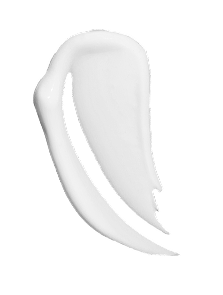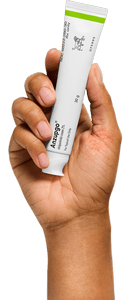
Introducing the first and only FDA-approved treatment for
adults with moderate-to-severe Chronic Hand Eczema (CHE)1,2
Introducing the first and only FDA-approved treatment for adults with moderate-to-severe Chronic Hand Eczema (CHE)1,2
No boxed warning.
See Important Safety Information for ANZUPGO below.

ANZUPGO is indicated for the topical treatment of moderate to severe chronic hand eczema (CHE) in adults who have had an inadequate response to, or for whom topical corticosteroids are not advisable.
Limitations of Use: Use of ANZUPGO in combination with other JAK inhibitors or potent immunosuppressants is not recommended.
Serious Infections
ANZUPGO may increase the risk of infections. Eczema herpeticum was observed in a subject treated with ANZUPGO. Serious and sometimes fatal infections have been reported in patients receiving oral or topical JAK inhibitors. Avoid use of ANZUPGO in patients with an active or serious infection. Consider the risks and benefits of treatment prior to initiating ANZUPGO in patients with chronic or recurrent infection, who have been exposed to tuberculosis, with a history of a serious or an opportunistic infection, or with underlying conditions that may predispose them to infection.
Closely monitor patients for the development of signs and symptoms of infection during and after treatment with ANZUPGO. Interrupt treatment with ANZUPGO if a patient develops a serious infection. Do not resume ANZUPGO until the infection resolves or is adequately treated.
Viral reactivation, including cases of herpes virus reactivation (e.g., herpes zoster), were reported in clinical trials with ANZUPGO. If a patient develops herpes zoster, consider interrupting ANZUPGO treatment until the episode resolves.
The impact of ANZUPGO on chronic viral hepatitis reactivation is unknown. Consider viral hepatitis screening and monitoring for reactivation in accordance with clinical guidelines before starting therapy and during therapy with ANZUPGO. If signs of reactivation occur, consult a hepatitis specialist. ANZUPGO is not recommended for use in patients with active hepatitis B or hepatitis C.
Non-melanoma Skin Cancers
Non-melanoma skin cancers, including basal cell carcinoma, have been reported in subjects treated with ANZUPGO. Periodic skin examinations of the application sites are recommended for all patients, particularly those with risk factors for skin cancer. Advise patients to avoid sunlamps and minimize exposure to sunlight by wearing sun-protective clothing or using broad-spectrum sunscreen.
Immunizations
Prior to ANZUPGO treatment, complete all age-appropriate vaccinations as recommended by current immunization guidelines, including herpes zoster vaccinations. Avoid vaccination with live vaccines immediately prior to, during, and immediately after ANZUPGO treatment.
Potential Risks Related to JAK Inhibition
It is not known whether ANZUPGO may be associated with the observed or potential adverse reactions of JAK inhibition. In a large, randomized, postmarketing safety trial of an oral JAK inhibitor in combination with methotrexate in rheumatoid arthritis (RA), patients 50 years of age and older with at least one cardiovascular risk factor, higher rates of all-cause mortality, including sudden cardiovascular death, major adverse cardiovascular events (MACE), overall thrombosis, deep venous thrombosis (DVT), pulmonary embolism (PE), and malignancies (excluding non-melanoma skin cancer) were observed in patients treated with the JAK inhibitor compared to those treated with TNF blockers. ANZUPGO is not indicated for use in RA.
Treatment with oral and topical JAK inhibitors has been associated with increases in lipid parameters, including total cholesterol, low-density lipoprotein (LDL) cholesterol, and triglycerides.
Adverse Reactions
Adverse reactions reported in ≤1% of subjects were application site pain, paresthesia, pruritus, erythema, and bacterial skin infections, including finger cellulitis, paronychia, other skin infections, leukopenia, and neutropenia.
Lactation
To minimize potential infant exposure, advise breastfeeding women to avoid direct contact with the nipple and surrounding area immediately after applying ANZUPGO to the hands and/or wrists.
1. ANZUPGO. Prescribing information. LEO Pharma Inc. 2. Dubin C, et al. Ther Clin Risk Manag. 2020;16:1319-1332. doi:10.2147/TCRM.S292504 3. Bissonnette R, et al. Treatment response of delgocitinib cream according to Chronic Hand Eczema (CHE) subtypes in adults with moderate to severe CHE: results from the Phase 3 DELTA 1, DELTA 2, and DELTA 3 trials. Oral presentation at: The 33rd Annual Congress of the European Academy of Dermatology and Venereology (EADV); September 25-29, 2024; Paris, France